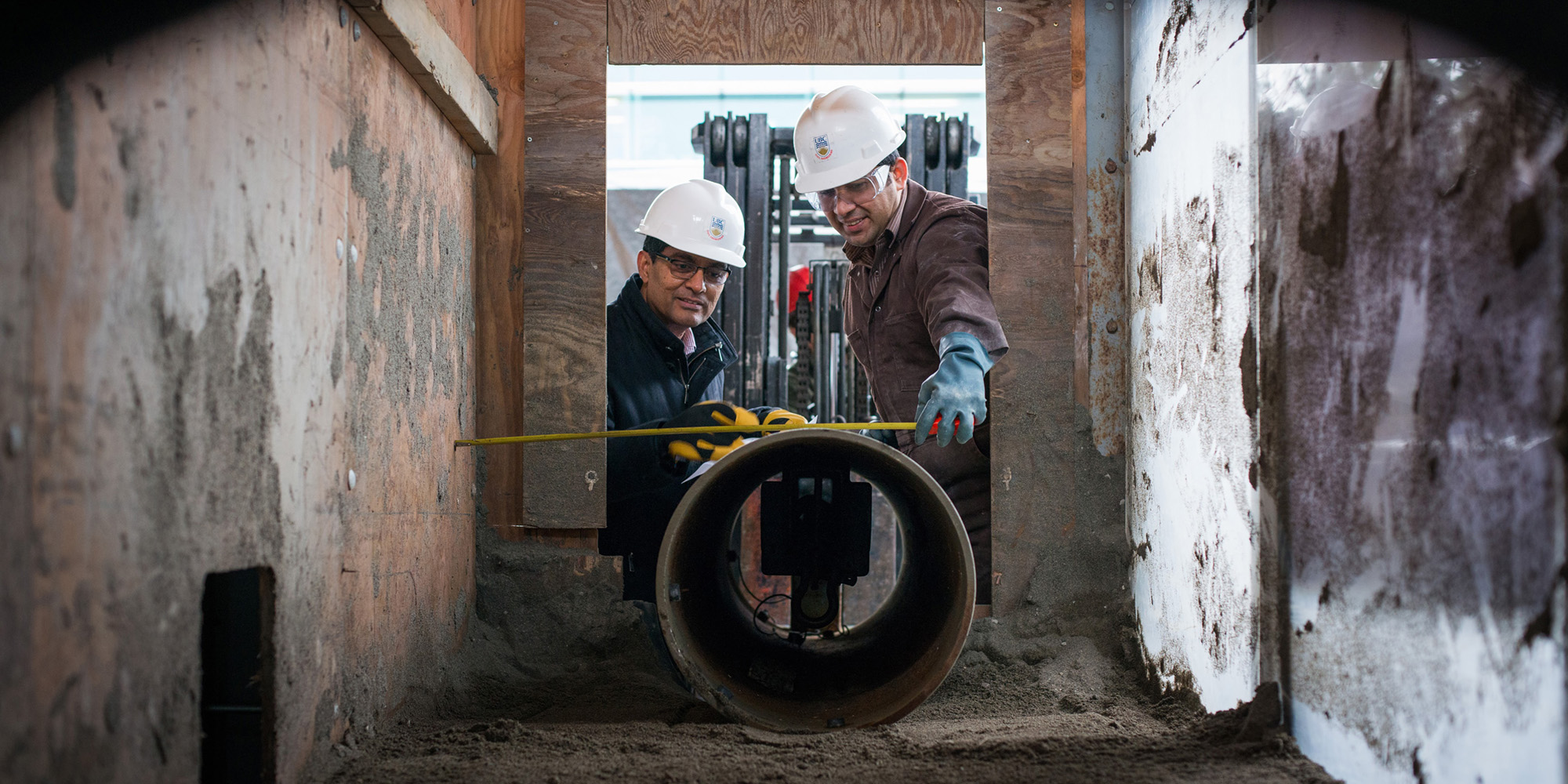Project Geotechnical Engineer Expertise for Large-Scale Developments
Wiki Article
Exactly How Consulting Engineers Enhance Geotechnical Engineering Projects: Insights Into Their Competence, Methods, and Collaborative Approaches
Consulting designers are pivotal in boosting geotechnical design jobs, using their specialized expertise to browse the complexities of subsurface problems. Their methods include a range of website investigation techniques, consisting of Requirement Penetration Examinations (SPT) and Cone Penetration Tests (CPT), which educate important decisions during the layout and construction stages. In addition, their collective methods foster communication amongst diverse task stakeholders, eventually forming the job's trajectory. As we examine the complex duties these experts play, it becomes clear that their payments extend past technological know-how, prompting a better look at the ramifications for task success.Duty of Consulting Engineers
The proficiency of seeking advice from engineers in geotechnical engineering is fundamental to the effective execution of construction tasks. These specialists play a critical function in analyzing dirt and rock residential properties, which are critical elements influencing style and building choices. By carrying out detailed website examinations, consulting engineers collect important data that informs the design process, guaranteeing jobs are developed on steady and appropriate ground.Consulting engineers also offer indispensable understandings into danger administration (geotechnical geologist). They identify potential geotechnical hazards, such as landslides, dirt liquefaction, and negotiation concerns, making it possible for stakeholders to implement reliable reduction strategies. Their knowledge aids in enhancing structure layouts, which can lead to significant expense savings and enhanced security
Moreover, consulting engineers function as an important web link in between task proprietors, engineers, and professionals. Their capability to convert intricate geotechnical information into actionable recommendations cultivates cooperation and facilitates informed decision-making throughout the project lifecycle. This multidisciplinary technique not just boosts task efficiency however likewise ensures conformity with regulatory criteria and finest practices.
Secret Approaches in Geotechnical Design

One key methodology is website investigation, which includes carrying out area examinations and research laboratory evaluations to collect data on subsurface problems. Methods such as Criterion Penetration Testing (SPT) and Cone Penetration Testing (CPT) are commonly utilized to examine dirt stratigraphy and toughness. In addition, geophysical approaches, consisting of seismic and electric resistivity studies, give non-invasive methods to analyze subsurface characteristics.
Another crucial method is numerical modeling, which allows engineers to mimic different situations and anticipate exactly how soil-structure communications will behave under different loading conditions. Finite Element Analysis (FEA) is an usual method used in this context.
Moreover, the design of structures, preserving frameworks, and earthworks depends heavily on these approaches - geotechnical geologist. By integrating innovative logical tools with field information, getting in touch with designers can establish tailored remedies that resolve certain project challenges, inevitably adding to the stability and safety of building and construction jobs
Value of Soil Analysis
Soil analysis acts as a foundational element in geotechnical design, supplying vital insights right into the physical and chemical properties of soil required for effective building preparation. Comprehending dirt features is critical for identifying its load-bearing ability, drain actions, and capacity for negotiation or instability. In-depth dirt examinations, including tasting and laboratory screening, aid determine parameters such as dirt kind, wetness web content, density, and shear stamina.
These analyses inform the selection of suitable building and construction strategies and products, ultimately affecting project security and durability. Cohesive soils might need different foundation styles compared to granular soils, requiring customized design remedies. Dirt evaluation help in determining contaminants that could position risks to human health or the environment, allowing for the development of reduction approaches.
Including dirt analysis into the early phases of task growth assists to lessen unanticipated obstacles, making certain that designers can expect and deal with potential issues prior to they intensify. By developing a detailed understanding of the site conditions, consulting designers can enhance design effectiveness and minimize prices, consequently boosting the total success of geotechnical design jobs.
Joint Approaches in Jobs
Successful geotechnical projects commonly hinge on collective strategies that bring together varied expertise from numerous self-controls. Reliable partnership among getting in touch with engineers, rock hounds, environmental researchers, and building and construction professionals is crucial for attending to complex obstacles and optimizing task outcomes. By leveraging the unique abilities and knowledge of each team participant, tasks can take advantage of an all natural understanding of the site problems, governing requirements, and design restrictions.Normal communication and interdisciplinary conferences promote the sharing of insights and promote a society of teamwork. These collective initiatives enable the identification of possible risks early in the job lifecycle, permitting prompt mitigation methods. Incorporating feedback from stakeholders, consisting of regional neighborhoods and governing agencies, makes sure that all perspectives are thought about, enhancing job approval and conformity.
Additionally, the assimilation of advanced innovations, such as Geographic Information Equipment (GIS) and Structure Info Modeling (BIM), more boosts partnership. These tools enable for civil geotechnical engineering the real-time sharing of information and visualization of geotechnical problems, advertising educated decision-making. Inevitably, a collective technique not just simplifies task execution but also lays the structure for cutting-edge solutions to complicated geotechnical engineering challenges.
Effect On Project Outcomes

Consulting engineers use sophisticated methodologies such as danger assessment and anticipating modeling, which enhance the precision of job projections. Their capability to integrate cutting-edge innovations, like geotechnical instrumentation and information analytics, additionally fine-tunes the layout and building and construction processes. As a result, tasks experience boosted effectiveness, minimized costs, and lessened delays.
In addition, cultivating reliable communication and partnership amongst team members improves analytic capabilities. When challenges develop, a joined front permits for swift identification of services, protecting against potential problems. Eventually, the collective initiatives of consulting engineers contribute to higher high quality end results, making certain that jobs satisfy both regulative standards and client expectations.
Conclusion

Report this wiki page